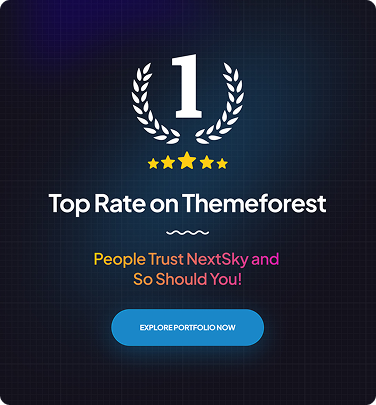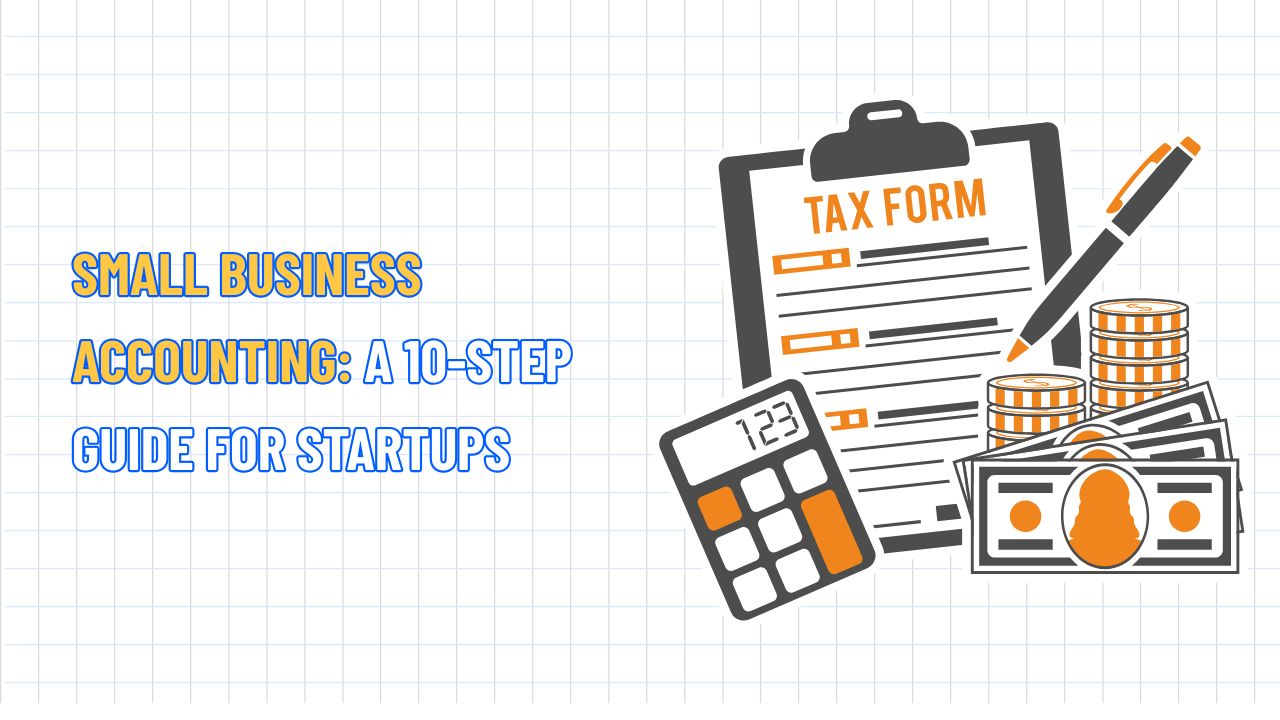How to Create a Clothing Line Business Plan With 9 Steps
Table of Contents Hide
Launching a fashion brand is a dream for many, offering the freedom to create and leave your mark in the vibrant fashion world. However, success requires a well-crafted clothing line business plan to transform your vision into a thriving, customer-attracting, and investor-appealing brand. This NextSky guide will help you create a professional business plan to conquer the competitive fashion market.

Why you need a clothing line business plan
A fashion brand business plan is your roadmap, shaping your vision, preventing costly mistakes, and building a solid foundation. Here’s why it’s essential:
- Create a distinct identity: In a crowded fashion market, a plan helps define what sets your brand apart—from design style to core values.
- Attract investors: A clear, logical plan with compelling data builds investor confidence in your potential.
- Optimize operations: A plan ensures smooth and efficient operations from selecting suppliers to managing inventory.
- Outshine competitors: Understanding the market and rivals helps you find gaps to shine.
- Stay on trend: Fashion evolves daily, and a solid plan keeps you adaptable to trends.
Research from Harvard Business Review shows that entrepreneurs with formal business plans are 16% more likely to succeed. A detailed plan is critical for survival in the fashion industry, where margins are thin and competition is fierce.
Read more: Successful Business Plan with the Secret from A to Z
9 steps to build a clothing line business plan
A complete fashion business plan should include the following sections to reflect your unique vision and address real-world industry challenges.
1. Executive summary: An inspiring overview
The executive summary is a concise yet powerful introduction, summarizing your business idea, goals, and competitive edge. It’s your “first impression” for investors or partners, so make it engaging, succinct, and inspiring. Write this section last to ensure it fully reflects your plan’s content.
Example executive summary: UrbanThread Co. is a streetwear fashion brand for Gen Z and Millennials, offering bold, sustainable, and ethically produced designs. With an e-commerce model and limited-edition collections, we seek $150,000 to launch an online store, open a pop-up shop, and achieve profitability by year two.
2. Company description
This section clarifies who your brand is and its place in the market. Answer these questions:
- What’s your mission? For example, delivering sustainable fashion, affordable streetwear, or exclusive high-end designs.
- What makes you unique? Your unique value proposition (UVP) includes eco-friendly materials, exclusive designs, or superior customer experience.
- What’s your legal structure? Are you a limited liability company (LLC), corporation, or sole proprietorship?
- What’s your domain name? Ensure it matches your brand for consistency (e.g., www.urbanthreadco.com).
Branding tip:
- Choose a short, memorable name that evokes emotions and is aligned with your target audience.
- Check domain availability immediately to avoid future conflicts.
- Avoid generic names that blend into the sea of brands.
Read more: Build a Super Effective Successful Bakery Business Plan
3. Market analysis: Know your playing field
A thorough market analysis is the foundation for your brand’s survival and growth. This section proves you understand the fashion industry and how to position your brand.
Target customer profile:
Define your ideal customer:
- Demographics: Age, gender, income, location.
- Psychographics: Interests, values, lifestyle (e.g., passion for sustainable fashion or trend-following).
- Shopping behavior: Do they shop via Instagram, websites, or stores? How much are they willing to spend?
Example: UrbanThread Co. targets 18–30-year-olds who love streetwear, follow TikTok and Instagram influencers, and are willing to spend $50–$150 on high-quality, eco-friendly products.
Competitor analysis:
Study direct competitors (similar fashion brands) and indirect competitors (like thrift stores or fast fashion). Identify:
- Market gaps: Unmet needs, like affordable, sustainable streetwear.
- Competitor strengths and weaknesses: Where can you outperform (quality, pricing, or service)?
- Industry trends: Demand for sustainability, inclusive sizing, or social media influence.
Market trends:
The global apparel market is projected to reach $2.25 trillion by 2025, driven by e-commerce growth and sustainable fashion trends. Key trends include:
- Direct-to-consumer (DTC) brands dominate due to low costs and global reach.
- Consumers prioritize transparency in product sourcing.
- TikTok and Instagram are shaping how customers discover and shop for fashion.
4. Product line: The soul of your brand
Describe your core products in detail, including:
- Product types: T-shirts, hoodies, dresses, accessories, or activewear.
- Unique features: Materials (e.g., organic cotton, recycled polyester), exclusive designs, or eco-friendly production.
- Pricing strategy: Aligned with your target audience’s budget and brand value.
- Sourcing and production: In-house production, local factories, or overseas suppliers?
Starting tip: Launch with 3–8 designs to manage efficiently and test market response. Offer color or size variants to expand options without complicating production.
Example: UrbanThread Co. launches with five organic cotton t-shirts and hoodies, priced at $50–$100, produced at certified sustainable local factories.
5. Organizational structure: Build your dream team
This section outlines how you organize your team to bring your brand to life:
- Key roles: Founder, designer, marketer, or supply chain manager.
- Team expertise: Highlight relevant skills (e.g., fashion design, e-commerce experience).
- Hiring plan: Anticipate staffing needs as your brand scales.
If starting solo, clarify which roles you’ll handle and when you’ll hire. Outsourcing tasks like web design or digital marketing can save costs for small startups.
Read more: Guide to Starting an E-Commerce Business Blueprint Success from A-Z
6. Operational plan: Turn ideas into reality
The operational plan details how you run your fashion brand daily:
- Business model: Will you sell via a website, physical store, or both? Use dropshipping or hold inventory?
- Location: For physical stores, choose high-traffic areas suited to your audience. For online, invest in a user-friendly, SEO-optimized, mobile-friendly website.
- Equipment: Display racks, payment systems, design software, or packaging materials.
- Suppliers: Choose ethical, high-quality partners.
- Inventory management: Plan for seasonal demand to avoid overstocking or shortages.
E-commerce tip: Your website is your digital storefront. Use platforms like Shopify with SEO-optimized themes like Glozin or Umino to create a seamless, attractive shopping experience.
7. Marketing strategy: Tell your brand’s story
An effective marketing strategy makes your brand stand out and connects with customers. Include:
- Brand identity: Create a professional logo, consistent color palette, and inspiring brand story.
- Digital marketing: Use Instagram, TikTok, SEO, and email marketing to drive traffic.
- Influencer collaborations: Partner with micro-influencers who share your values to boost credibility.
- Content marketing: Publish blogs, videos, or lookbooks showcasing your style and quality.
- Offline strategies: Host pop-up shops, attend fashion events, or sponsor local communities.
Example strategy: UrbanThread Co. will run TikTok campaigns with streetwear styling videos, collaborate with sustainability-focused influencers, and optimize its Shopify site for keywords like “sustainable streetwear” or “urban fashion.”
8. Financial plan: Budget for success
The financial plan is your brand’s financial roadmap, projecting costs and revenue:
- Startup costs: Include design, prototyping, production, website, marketing, and rent.
- Revenue projections: Estimate sales based on market research and pricing strategy.
- Profit margins: Aim for 5–20%, depending on your segment (fast fashion, luxury, or sustainable).
- Funding needs: Specify the required capital and sources (savings, investors, loans).
- Break-even timeline: When will you start profiting?
Example: UrbanThread Co. needs $150,000 for inventory, website, and marketing. We project $50,000 in first-year revenue, reaching profitability in year two with a 15% margin.
9. Growth plan: Think big, aim far
This section outlines your long-term vision:
- Product expansion: Add new lines like accessories, shoes, or activewear.
- Market expansion: Reach new customer groups or regions (e.g., Asia, Europe).
- Sales channel expansion: Open physical stores or scale global e-commerce.
- Sustainability commitments: Aim for eco-certifications or reduced carbon emissions.
Example: UrbanThread Co. will launch a premium accessories line in year three and expand to Europe by year five, leveraging Shopify’s global features.
A clothing line business plan guides you to turning creative ideas into a successful, sustainable brand. Following these nine steps, you can navigate the competitive fashion industry, attract customers, and secure investment. With NextSky’s insights, your brand is ready to shine in the global market.










